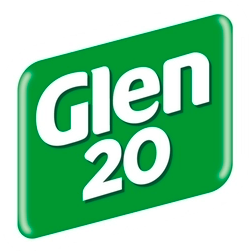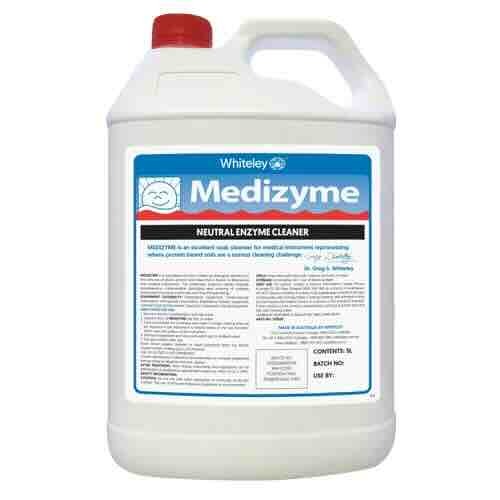Hospital Grade Disinfectant: Which should I choose?
Keeping healthcare environments clean and safe has never been more important. Whether you manage a hospital, clinic, aged care facility, or home healthcare setting, choosing the right hospital grade disinfectant is critical for preventing infection and maintaining compliance with Australian health standards.
But with so many disinfectant brands and formulations available — from Viraclean to Dettol, Milton, and Glen 20 — how do you know which one is right for your needs?
In this post, we’ll explain what makes a disinfectant “hospital grade”, the key factors to look for, and how to choose the right cleaning solution for your facility.
What Is a Hospital Grade Disinfectant?
Hospital grade disinfectants are cleaning solutions approved by the Therapeutic Goods Administration (TGA) for use in healthcare settings. They are designed to destroy microorganisms such as bacteria, viruses, and fungi that can cause infections.
Unlike regular household cleaners, hospital grade disinfectants undergo stringent testing to ensure they effectively eliminate pathogens on surfaces such as medical equipment, patient rooms, and common areas.
Common hospital grade disinfectants include:
- Sodium hypochlorite (bleach-based cleaners)
- Enzyme cleaners
- Quaternary ammonium compounds (quats)
- Phenolic disinfectants
- Alcohol-based solutions
Key Factors When Choosing a Hospital Grade Disinfectant
Selecting the right product involves more than just checking the label. Here’s what to consider:
 |
 |
 |
1. Efficacy and TGA Registration
Always check that the disinfectant is TGA-approved for hospital use. This ensures it meets Australia’s disinfection standards.
Look for claims such as:
- Effective against a broad spectrum of pathogens
- Tested against enveloped and non-enveloped viruses (e.g., SARS-CoV-2)
- Proven to meet hospital-grade disinfection requirements
2. Active Ingredients
Different active ingredients suit different cleaning needs:
|
Active Ingredient |
Common Use | Examples |
|---|---|---|
|
Sodium hypochlorite |
General disinfection, blood spills | Milton |
|
Quaternary ammonium compounds (quats) |
Surface cleaning, low toxicity | Viraclean |
|
Enzyme cleaners |
Biological waste, organic residue | Medizyme |
|
Phenolic disinfectants |
High-level disinfection, equipment | Lysol |
|
Alcohol-based |
Quick-drying surface sanitisation | Glen 20, Dettol |
 |
3. Surface Compatibility
Always match your disinfectant to the surface:
|
4. Contact Time
Each disinfectant requires a certain contact time — the period the surface must remain wet to effectively kill pathogens.
Check the product label and allow the full dwell time before wiping or rinsing.
5. Safety and Ease of Use
Choose disinfectants that are:
- Non-toxic and low odour
- Easy to dilute or ready-to-use
- Clearly labelled with safety instructions
- Suitable for use around patients and staff
Tip: Consider colour-coded bottles and wall charts for easy staff training and compliance.
 |
 |
 |
Hospital vs. Household Disinfectants — What’s the Difference?
|
Feature |
Hospital Grade Disinfectant | Household Disinfectant |
|---|---|---|
|
Regulation |
TGA-registered (Australia) | Consumer-grade |
|
Pathogen Coverage |
Broad-spectrum, includes healthcare pathogens | General bacteria and viruses |
|
Use Case |
Hospitals, clinics, aged care | Homes, offices |
|
Efficacy Testing |
Clinically verified | Not always tested for medical use |
Choosing the Right Disinfectant for Your Facility
To make your selection easier, consider:
- Environment: Patient rooms, surgical areas, or high-traffic surfaces
- Cleaning frequency: Daily use vs. outbreak management
- Residue: Some leave films that may affect sensitive equipment
- Application method: Spray, wipe, mop, or fogging system
A practical approach is to use a combination of disinfectants for different purposes — e.g., a Sodium hypochlorite-based product for deep cleaning and a Viraclean-type solution for routine disinfection.
When choosing a hospital grade disinfectant, prioritise:
- Proven TGA registration
- Appropriate active ingredient
- Compatibility with your surfaces
- Correct contact time
- Safe and practical application
By selecting the right cleaning solution, you ensure safer environments for patients, visitors, and staff — while maintaining compliance with infection control standards.
Explore our range of trusted brands and cleaning supplies at Alpha Medical Solutions Disinfectants.
| Alpha Medical Solutions Pty Ltd. |
| Call us on: 1300-783-747 |
| Email: info@alphamedicalsolutions.com.au |
FAQ
1. What does “hospital grade” mean for disinfectants?
It means the disinfectant meets TGA standards for use in healthcare environments and is proven effective against a broad spectrum of pathogens.
2. Can hospital grade disinfectants be used at home?
Yes. Many are safe for domestic use, especially in environments requiring higher hygiene levels like home care or aged care.
3. How often should hospital disinfectants be used?
Daily in patient areas and between patient contact on surfaces and equipment.
4. Are all disinfectants effective against viruses?
Not all. Check the label for “broad-spectrum” or “virucidal” claims to ensure viral efficacy.


